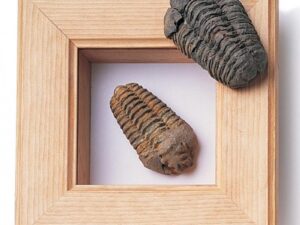Orthoceras are often confused with the somewhat aesthetically similar Bacultes – they both have long and narrow tubular shells. However, Orthoceras existed much earlier – between 300 and 400 million years ago – than Baculites, which lived between 70 and 100 million years ago, during the late Cretaceous period. The two are in fact quite easily distinguishable, by the suture lines along their shell. Orthoceras have the straight, simple horizontal lines we see here, whereas Baculites have much more intricate, patterned suture lines.
Any remaining species of ammonites became extinct 66 million years ago, in the Cretaceous-Paleogene extinction event. Although, like Ammonites, Orthoceras are cephalopods, they are actually a genus of the nautiloid family of Cephalopods. Although orthoceras themselves are extinct, some nautiloids still survive today. Nautiloids first appeared 500 million years ago, during the Paleozoic era, and were the main predatory species. Only a few species survive today and inhabit seas around Australia and the Philippines. They are sometimes referred to as “living fossils”, due to the belief that the remaining species are of a similar form to their ancestors.















